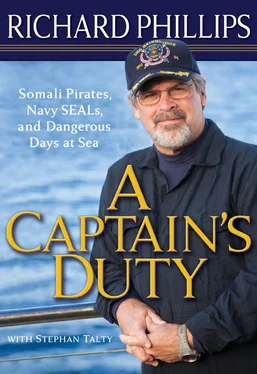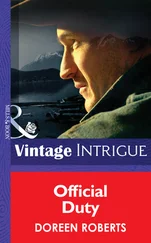My third week on the water, there was trouble. The captain had logged (that is, reported) myself and the second mate for a minor infraction—not doing the tide report for our next port. We’d actually written the tides down, but then the chief mate had mislaid them, thinking our report was scrap paper. The chief mate went to the captain to argue our case, but the guy refused to hear him out. So the chief mate quit. The second mate quit in solidarity, followed by his wife, who was working as the steward utility. The bosun quit. The able-bodied seamen quit.
Everyone quit working and left the ship. Suddenly I, a glorified taxi driver, was the chief mate on a ship headed toward the Arctic Circle. We were so short of men we had to hire a couple of teenagers, one fourteen and the other sixteen, as able-bodied seamen. The captain didn’t care. All that mattered was that he believed everyone onboard was sober. The captain was an ex-alcoholic who’d banned any kind of liquor from the ship. But after hours some of the crew would get buzzed on Everclear grain alcohol. It’s very, very strong stuff and something about it and the weird light up there kind of made everyone a little crazy. So the captain would come out of his quarters once a day and shout at me, “Are those guys drinking, Phillips? I think I smell alcohol on this boat.” And I would say, “I’ll watch ’em, Cap, I’ll watch ’em.” Meanwhile I’d been drinking with the crew most nights.
I managed to coax everyone back on the ship. But after a couple weeks we pulled in to Pelican Cove, Alaska, which has a fish processing plant, six or seven houses, one bar, and that’s it. The captain ordered some extra work and the entire crew marched off the ship again. Everyone walked down the gangplank and headed to Rosie’s Bottomless Bar.
We walked in and the bartender said, “Hey, did you guys see any bears?”
“No, why?”
“Well, two guys coming from a ship the last time around were eaten by bears.”
So not only did I have to persuade the guys to return to the ship again, I also had to watch my back for black bears while I did it. It took me until the early hours of the morning, but I finally shepherded all the deserters back to the Provider .
The captain was standing on the bridge wing as I marched the crew back.
“I brought ’em back, Cap,” I said.
He just glared at us. Everyone went to bed, including the captain. We got up the next day, had breakfast, and got back to work. No one said a word. It seemed like creative chaos was the order of the day in the merchant marine.
But the trip also had its glorious moments. From the deck of the boat, gliding along those beautiful waters, we’d see moose, bears, foxes. Orcas breached the surface twenty yards away and then swam alongside us for miles. We rescued two fishermen, a father and son, who were floating along in a rowboat in the middle of the Gulf of Alaska. Their boat had gone up in flames and even though they were in their exposure suits, the cold was so intense that they were near death from exposure. So the fishermen were debating who was going to shoot the other with a shotgun when we spotted them from the deck. They were so cold they couldn’t talk for hours; they just sat there shivering. For a day, they’d watched ships sail by, so close they’d been able to read the names off the bows, but no one heard their cries for help. And later in the trip, I saw an island with trees and snow on it growing out of the middle of the ocean where the charts said there was nothing at all. When the sun rose, the bottom of the island slowly melted away and then the whole thing disappeared. It turns out it was a phenomenon called super-refraction where at high latitudes you can see around the curvature of the earth. I was actually staring at a mountaintop three hundred miles away, but it seemed like we were going to glide right up to it.
This was a world few people get to see. The wild characters, the heart-stopping scenery, the outrageous behavior. It was everything I’d become a merchant mariner to be a part of.
I was hooked.
That trip began my education in how to command men. (Lesson number one: Learn how to talk to your guys.) It also taught me that, on the sea, nothing goes like you expect it to. You have to be prepared for a staggering amount of possibilities, from mutiny to hungry bears to optical illusions at sea. And you have to improvise. Captains who become fixated on one thing—like the crew having a beer or two—quickly lose the trust of their men.
That was doubly true in the waters off the Somali coast. To survive in Apache country, you have to think like an Apache.
The next day dawned sunny and hot. The Office of Naval Intelligence in Maryland e-mailed its latest Worldwide Threats to Shipping Report. I opened it immediately. Pirate attacks and other threats were broken down by region. For the North Atlantic, the Mediterranean, and the entire Atlantic, there wasn’t a single incident reported.
I skipped ahead to the East Africa section. There were thirty-nine attacks reported. For a single week . I sucked in my breath. The bulletin was like a police blotter for mariners, and it told me that East Africa was the last place in the world you wanted to be right now.
I flicked my eye over some of the entries:
1. Vessel reported suspicious approach 20 Mar 09 at 0600 UTC while underway, Bab-el-Mandeb.
2. Five men in two speed boats armed with guns approached vessel from the port bow, Bab-el-Mandeb.
3. Chemical tanker reported attempted boarding 29 Mar 09, Gulf of Aden.
4. German navy tanker (FGS SPESSART) fired upon 29 Mar 09. Seven pirates in a skiff opened fire on the naval ship, mistaking it for a merchant vessel, Gulf of Aden.
5. Vessel fired upon, approached by one skiff with seven men onboard armed with AK-47s, Gulf of Aden.
6. Bulk carrier (TITAN) hijacked 19 Mar 09. Six men in a speed boat armed with AK47s and pistols boarded and hijacked the vessel, Gulf of Aden.
7. Cargo vessel (DIAMOND FALCON) fired upon 14 Mar 09. Two skiffs with men onboard armed with automatic weapons and RPGs fired upon the vessel.
8. Vessel reported attempted hijacking 1 Jan 09 at 1730 local time, Gulf of Aden.
9. Bulk carrier fired upon 30 Mar 09. A speed boat approached the vessel while a mother ship was sighted further back, Indian Ocean.
10. Container ship reported suspicious approach 28 Mar 09, Tanzania.
The pirates were approaching and attacking each and every kind of vessel that ventured around the Horn of Africa: tankers, fishing schooners, even luxury cruise ships. Nothing was safe out there. There were so many ships flying down the coast of East Africa, you had to hope you weren’t one of the unlucky ones to see a few pirate boats pop up on your radar. Once you saw them, you had very few ways of preventing an attack: speed, fire hoses, and deception were pretty much your only tools. The Somalis had automatic weapons, speedboats, rocket-propelled grenades, and a reputation for complete ruthlessness.
It was like a lion and a herd of wildebeest on the African plain. You just hoped there was safety in numbers, because if the lion chose you, you were going to have a very, very bad day. And just as the lion looks for weakness—the slow, the lame, the young—pirates zeroed in on ships that looked defenseless.
But Americans seemed out of the reach of pirates. The last time seamen on a U.S. ship were taken hostage by pirates was two hundred years ago, during the days of the Barbary corsairs, Muslim bandits who’d operated out of North African ports like Tripoli and Algiers, on the other side of the continent. Back then, piracy was near the top of Thomas Jefferson’s priority list. In 1801, 20 percent of the U.S. federal budget was spent paying ransoms to the African buccaneers. Crewmen from the ships lived and worked as slaves in the luxurious homes of the Algerian pirate chiefs. America even fought two bloody wars with the Barbary states, giving the Marines’ Hymn its famous second line—“to the shores of Tripoli.”
Читать дальше












